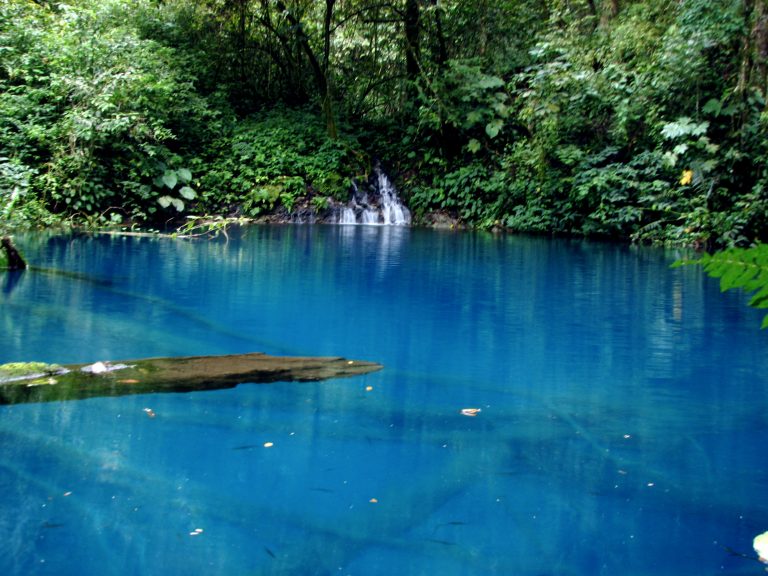Kerinci Tour
Landscape
The park is dominated by the Barisan mountains. Scenery in many areas is very spectacular with active and dormant volcanoes including Mount Kerinci, at 3805m the highest mountain in Sumatra and Indonesia's highest active volcano. The national park forests protect the headwaters of some of Sumatra's most important rivers which flow from springs and peat swamps like Ladeh Panjang (Kerinci district) and Danau Kebut (Merangin district) high in the mountains, as well as many lakes and wetlands.
The Great Sumatra Fault runs through the centre of the national park and forms the densely populated Kerinci valley, which lies in the middle of and is surrounded by national park forests.
Flora and fauna
Kerinci Seblat is most famous amongst bird-watchers as the best place to see most of the highland Sumatran endemic bird species including the Schneider's Pitta, Salvadore's pheasant and Sumatran Cochoa, all presumed extinct for much of the 20th century before being rediscovered here. More than 375 species of bird have been recorded to date.
This is also the most important location in Sumatra for wild Sumatran Tiger and one of the 12 most important tiger reserves anywhere in the world although seeing wild tigers is unusual due both to the dense forest and the animals' shy nature. Other fauna includes elephants (best seen in national park forests in Bengkulu), clouded leopards, tapirs, sun bears and at least seven species of primate.
Forest edge farmers continue to report occasional sightings of the mysterious orang pendek, a large, bipedal cryptozoological primate resembling an orangutan (which are not recorded in Kerinci Seblat).
The national park also houses the biggest and the tallest flowers in the world, the monstrous, flesh red flower of the parasite Rafflesia arnoldi which can grow up to a metre in diameter, and is best searched for in the Bengkulu area of the park - ask for flowering information in Curup. In the southern part of Kerinci district hope to see the slightly smaller Rafflesia hasselti which is a vivid dark red in colour. The huge Amorphophallus titanum and Amorphophallus gigas are also present and can grow up to 4 metres in height. A remarkable flower at higher altitudes on Mt Kerinci and Mt Tujuh is the Javanese edelweiss Anaphalis javanica, which only grows on volcanoes. This shrub can reach more than two metres in height and is colored white-green because of its small hairs; the flowers are yellow with white. Numerous orchids are also found, most often flowering at the beginning of the rainy season in late September or October.
Climate
Rainfall is heaviest between October-December and from February-April while May-August is mainly dry but with some occasional rains, there are no major variations in seasonal temperature. Photographers may wish to avoid the period July-August as these dry months are often hazy. Because much of the park is above 700m in altitude, evenings and nights tend to be cool while in the high mountains temperatures may occasionally drop as low as 5C at night and so trekkers should be prepared for cool evenings
Rawa Bento (Swan Forest)
Boating along the river, discover the wild animals and floral villas, enjoy the silence of nature.
Overlooking the view of Mount Kerinci and Gunung Tujun
See
Mt. Kerinci - at 3805m, the highest active volcano in Southeast Asia.
Lake Gunung Tujuh - South East Asia's highest crater lake, still surrounded by pristine forests. A lost world hidden in the clouds.
Lake Kaco - the brilliantly blue swimming hole and natural aquarium hidden in the forests in the southern parts of the Kerinci valley. There are at least four other lakes in the forests near Lempur - Lake Lingkat, Lake Nyalo, Lake Duo, and Lake Kecik.
The highland wetlands of Rawa Ladeh Panjang and Rawa Bento, the highest wetlands in Southeast Asia. A dugout canoe can be taken through the wetlands at Rawa Bento.
Mt. Kunyit - an rarely climbed, active, and somewhat mystical volcano between the villages of Talang Kemuning and Lempur. An impressive hot springs can be found deep in the forest at the foot of the mountain.
Other hot springs besides the ones at Mt. Kunyit include Grao Sakti, near the village of Renah Kemumu, a hot springs a few days into the forest from Ladeh Panjang, the very accessible hotsprings at Semerup and Sungai Medang.
The Bukit Tapan road, which cuts through the national park, is a great place to spot wildlife day or night, including Mitered Leaf Monkeys, Short-tailed Macaques, Siamang Gibbons, Hornbills and other bird life, Slow Lorises, a few species of civets, flying squirrels, and others.
Tea plantations and the tea factory in the Kayu Aro sub-district, at the foot of Mt Kerinci - you can tour after getting permission from the locals.
Traditional dance ceremonies and maybe a Tiger calling ceremony by a Kerinci shaman
Lake Kerinci - the largest lake in the region, and an important source of fish for the surrounding villages.
Bukit Khayangan, an overlook above Sungaipenuh that provides fantastic views of the valley.
Fantastic forest scenery along the river at Muara Imat village.
The elephant sanctuary at Seblat, Bengkulu to the west of the national park (ask permission from KSDA Bengkulu first.
Remote, rarely visited traditional forest-edge villages, like Renah Kemumu, in Jangkat and Sungai Tenang and Muara Siau areas of Merangin district.
Megaliths in the Kerinci valley and at remote and rarely visited Renah Kemumu village in Merangin district.
Do
The national park offers superb trekking and climbing opportunities for both novices and the more experienced as well as bird and wildlife watching whether just going for a walk for a day or a week long jungle expedition.
Climb Mt Kerinci: the popular trek up to either Camp 2 or 3 usually takes 2 days and 1 night, including the descent, Avoid rainy season months (November-February) weekends and public holidays.Bring warm clothes and a rain cape.
Climb up to Lake Gunung Tujuh - one day return or camp over night by the lake. Avoid weekends and public holidays.
If staying in Sungaipenuh, ask the National Park office or your hotel to help you rent a car (motor bikes not advised!) for a Night Safari through the forests of Bukit Tapan: the road passes through dense forests and a night drive (leave about 10pm, return at 1-2am) gives a chance to experience tropical forest at night..and the chance to see some of the inhabitants (Sumatran tigers, Asiatic golden cat, sunbears, tapir, civet cats and rare serow antelopes are among the animals that have been spotted)
Go bird watching or just enjoy fantastic scenery from a dugout canoe in beautiful Danau (lake) Bento, a stunning marshland area at the foot of Mt Tujuh. The Kerinci Bird Watching Club are now starting to offer specialist bird watching trips for visiting 'twitchers'
Trek (2 days, one night) from Talang Kemuning village (2 hours from Sungaipenuh) to forests of Mt Kunyit (south of the Kerinci valley) to see sulphur pits and hot springs and pitcher plants or from Renah Kayu Embun (Sungaipenuh) climb to the peak of Mt Raya for fantastic views and rare flora such as the Kayu Embun tree and pitcher plants, Kerinci rabbits and yes, the chance of a possible Sumatran tiger encounter.
More adventurous forest treks - the forest trail west from Lempur in the south of Kerinci district to Sungai Ipuh village in Mukomuko district of Bengkulu - allow five days though the locals do the trip in 3 days (you will need special permission from park headquarters); Lempur to Rantau Kermas via the ancient enclave village of Renah Kemumu (4 days - megaliths and hot springs and stunning scenery) or stay in forest villages in Muara Siau, Merangin district like Durian Rambun or Lubuk Bira.
Tiger watching- unlike India it is difficult to see wild Sumatran tigers even though there may be as many as 200 tigers in and around Kerinci Seblat but national park officers will advise on areas where tigers are usually present and suggest experienced guides. And yes, people do see tigers.
The Muara Imat-Birun area on the Kerinci-Merangin district borders is one of the best places to hope to see wild tigers or at least tiger signs as well as Rafflesia and Amorphophallus, rare orchids and good birdwatching. Ask at the national park offices.
Tour recommendation:
– 1 days tour
– Mount Kerinci + Rawa Bento (4N/5D)
– Gunung Tujuh + Rawa Bento (4N/5D)
– Mount Kerinci + Gunung Tujuh + Rawa Bento (5N/6D)



Danau Kaco (Blue Lake)
Located at Kerinci Seblat National Park. It is a great masterpiece of nature having blue water color with contrasts with the green foliage of trees around it.
Tour recommendation: Mount Kerinci + Danau Kaco (4N/5D)
Whitewater Rafting (Geopark Merangin)
Fun and safe whitewater adventures for wilderness rafting. Pass through the waterfall, the largest tea plantation in the world and the highest volcano in Indonesia.
Tour recommendation: Mount Kerinci + Whitewater Rafting (4N/5D)


